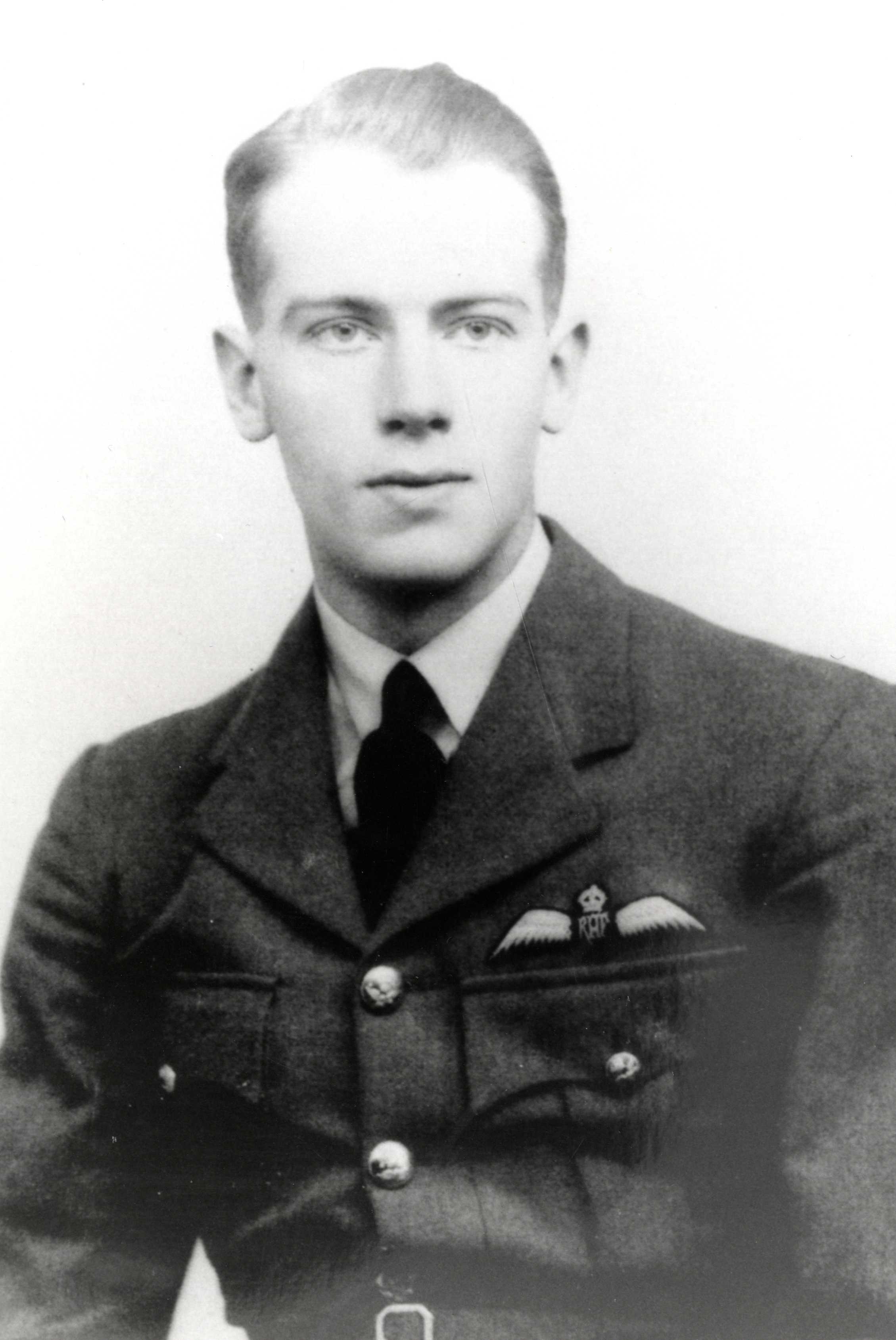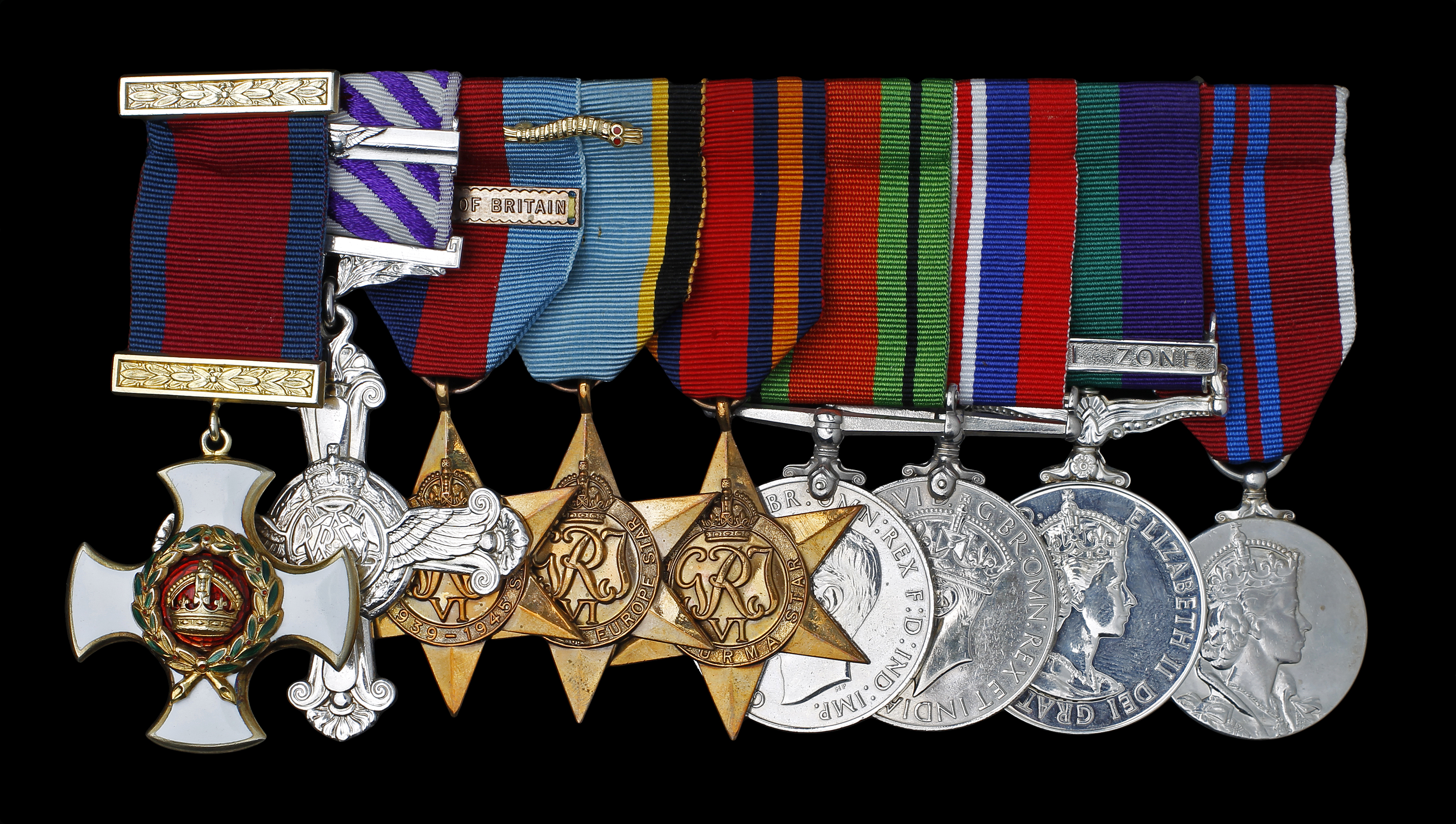Wing Commander Bob Doe, DSO, DFC and Bar
Helen Doe tells the story of her father’s rise through the RAF ranks and the awarding of the DFC and DSO through Gazette citations.
 On Bob Doe’s death in 2010, there were major obituaries to this war hero in both the
Daily Telegraph and The Times.
On Bob Doe’s death in 2010, there were major obituaries to this war hero in both the
Daily Telegraph and The Times.
Hailed as the third-highest scoring ace in the Battle of Britain, much was made of his humble beginnings. Bob was the son of a gardener, and left school at an early age with no qualifications. His passion for flying, and the help of a senior officer who recognised his qualities, got Bob into the Royal Air Force Volunteer Reserve (RAFVR). Here, in his spare time from a job as an office boy for the News of the World, he learnt to fly.
The still relatively new RAF distinguished itself from the other two services as the technical force that required educational qualifications from its recruits at all levels, certainly for officers. Men joining from the RAFVR were normally taken on as sergeant pilots.
Ginger Lacey, another great ace, served as a sergeant pilot, despite his excellent educational background as a chemist. Just 10 per cent of RAFVR recruits joined as officers, yet Bob did just that.
On 2 May 1939 (Gazette issue 34621) a list of men who had been granted short service commissions as acting pilot officers was published. Listed with Bob were several other names of men who were to train and later serve with him: Avery, Crimp, Dewhurst, Elsdon, Gout, Hemingway, Hight, Mortimer Rose, and others.
Service records of World War 2 RAF officers can be difficult to access. Only World War 1 service records have been publicly released. However, through the promotion and medal notices in The Gazette, there is a window on a man’s service.
In January 1940, the now trained, new officer recruits became pilot officers on probation (Gazette issue 34780), and on April 1940 (Gazette issue 34826), it was announced that RFT Doe was confirmed as a pilot officer. He was just 20 and had been in his first squadron, 234, since November 1939. This was also the first time that he flew a Spitfire, when the squadron was equipped with them in March. This was a dream machine for these young men. In Bob’s words:
 “… you line up and you open the throttle and an almighty wuump hits you and this thing tears off across the airfield and you’re air borne in no
time at all. And you are then – you’re not flying an aeroplane, you’ve got wings on
your back and you’re just flying. It is a dream. It’s the most wonderful sensation
I have ever known.”
“… you line up and you open the throttle and an almighty wuump hits you and this thing tears off across the airfield and you’re air borne in no
time at all. And you are then – you’re not flying an aeroplane, you’ve got wings on
your back and you’re just flying. It is a dream. It’s the most wonderful sensation
I have ever known.”
His newly-formed squadron was pronounced operational in May 1940, and in July was moved to St Eval, Cornwall, where they commenced convoy patrols and intercepts, occasionally engaging with enemy aircraft. Then on 13 August, the young pilots were moved to the front line at Middle Wallop, Hampshire. Here, they were truly in the thick of the fighting, losing three pilots on their first sortie.
The losses continued, but so did their wins. In four weeks, five pilots were killed in action, others were badly wounded, and two were prisoners of war. On 4 September the squadron became the highest scoring in one day. 234 Squadron returned to St Eval in September, but experienced fighters were badly needed, as the Battle of Britain continued. Bob was soon back at Middle Wallop, now flying Hurricanes with 238 Squadron. With just 30 minutes’ practise on his new plane, Bob was leading his flight just a day after joining the new squadron.
The details of Bob’s award of the DFC for service in 234 Squadron were announced in Gazette issue 34976, dated 22 October 1940:
‘Pilot Officer Doe has displayed great courage in the many patrols undertaken by his squadron and has destroyed nine enemy aircraft. He has shown outstanding dash and an eagerness to engage the enemy at close quarters.’
The following month his bar to the DFC was announced (Gazette issue 35001) for his service with 238 Squadron:
‘This Officer has continued to engage the enemy with initiative and success. On one occasion he dived vertically through a strong protective formation of fighters and attacked two – four engine enemy aircraft. He has destroyed a total of 14 hostile aircraft.’
In January 1941, he gained his promotion to flying officer, together with Mortimer Rose, Ken Dewhurst, Keith Lawrence and Pat Horton, who survived with him. But as the news was announced in (Gazette issue 34621), Bob was seriously wounded and in hospital, not knowing if he would ever fly again.
After major surgery on his face involving over 20 operations, Bob did get back to the frontline, joining 66 Squadron at Perranporth in Cornwall in May 1941. But after five months, he was posted to a training unit. The RAF needed good, experienced fighter pilots to train up the new recruits. He was, he said, ‘rather glad of a rest’. He was a success as a trainer and enjoyed it very much. His promotion to flight lieutenant rank was announced on 30 December 1941 (Gazette issue 35398). During this time, he was promoted again to squadron leader.
But he had not lost his desire to engage closely with the enemy, and he volunteered for an overseas posting. In November 1943 he landed at Bombay after a dangerous voyage on a troopship through the Mediterranean. He was given the task of forming a new Indian Air Force squadron. No 10 IAF Squadron combined a number of nationalities, the majority being Indian. Many of the airmen and aircrew were inexperienced, and Bob had to form them into a fighting unit. This he did very successfully, and in December 1944, the squadron was posted to fight the Japanese over the Burmese jungles in the Arkan campaign.
While D-Day was happening in Europe, Bob and many others continued the tough fight in the Far East. He led with success, and in
October 1945 (Gazette supplement 37291), it was announced that he was awarded the DSO. His citation is as follows:
many others continued the tough fight in the Far East. He led with success, and in
October 1945 (Gazette supplement 37291), it was announced that he was awarded the DSO. His citation is as follows:
‘Under the inspiring leadership of Squadron Leader Doe, his squadron has attained a high standard of operational efficiency. He has successfully completed numerous bombing and low-level attacks within 60 yards of our troops and over mountainous and difficult terrain. Whilst operating over the Arakan front his squadron has been responsible for the destruction of over 200 river craft, one tank, three bridges, six ferries and various other enemy objectives. Squadron Leader Doe has completed his third tour of operational duty and has at all times displayed an unconquerable spirit and great devotion to duty.’
The Gazette is not just valuable for service details; it also gives the wider context to campaigns. It is here where senior officers posted their despatches explaining the action from their perspective.
Dowding’s well-known despatch on the Battle of Britain was not published until 1946, although he had written it in 1941 (Gazette supplement 37719). In March 1951, Air Chief Marshal Peirse’s despatch on the war in Burma was published, covering the air operations in Southeast Asia from November 1943 to May 1944 (Gazette supplement 39173). While the following month, Lieutenant General Sir Oliver Leese provided his view of the hard-fought battles on land and in the air from November 1944 to August 1945, as they fought to push Japanese forces out of Burma through dense impenetrable jungle (Gazette supplement 39195).
At the end of hostilities, Bob returned to England and remained in the RAF post-war. In 1955, his promotion to wing commander was announced (Gazette supplement 40666). He had come a long way since leaving school with no qualifications to become a highly decorated war hero, with a senior rank in the RAF. Bob eventually retired in 1966.
About the author
Dr Helen Doe is a historian, daughter of Bob Doe, and author of Fighter Pilot.
Images: Bob in 1939, age 19; Bob and his first Spitfire in 1940; Bob’s medals
